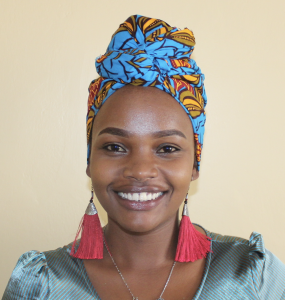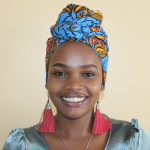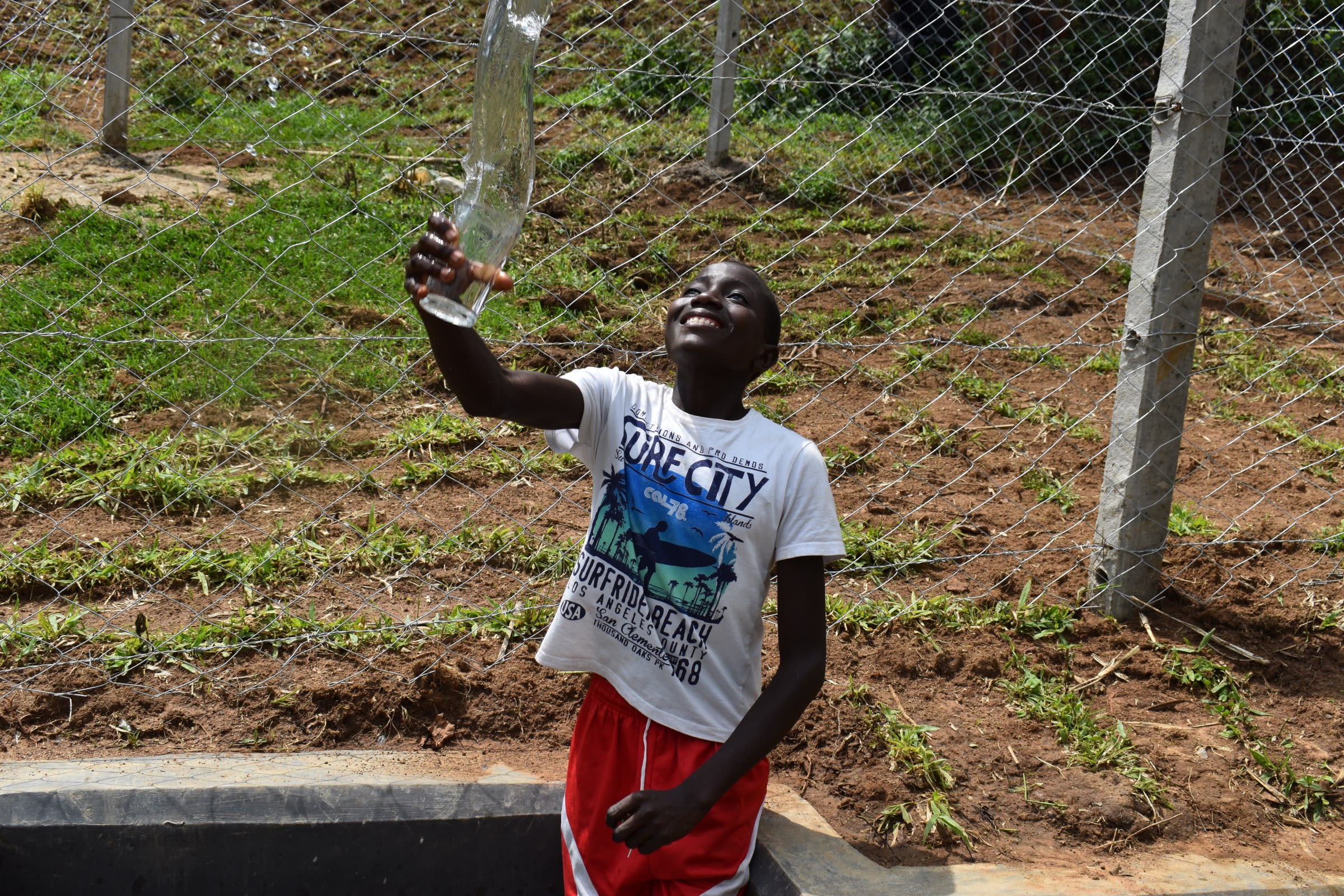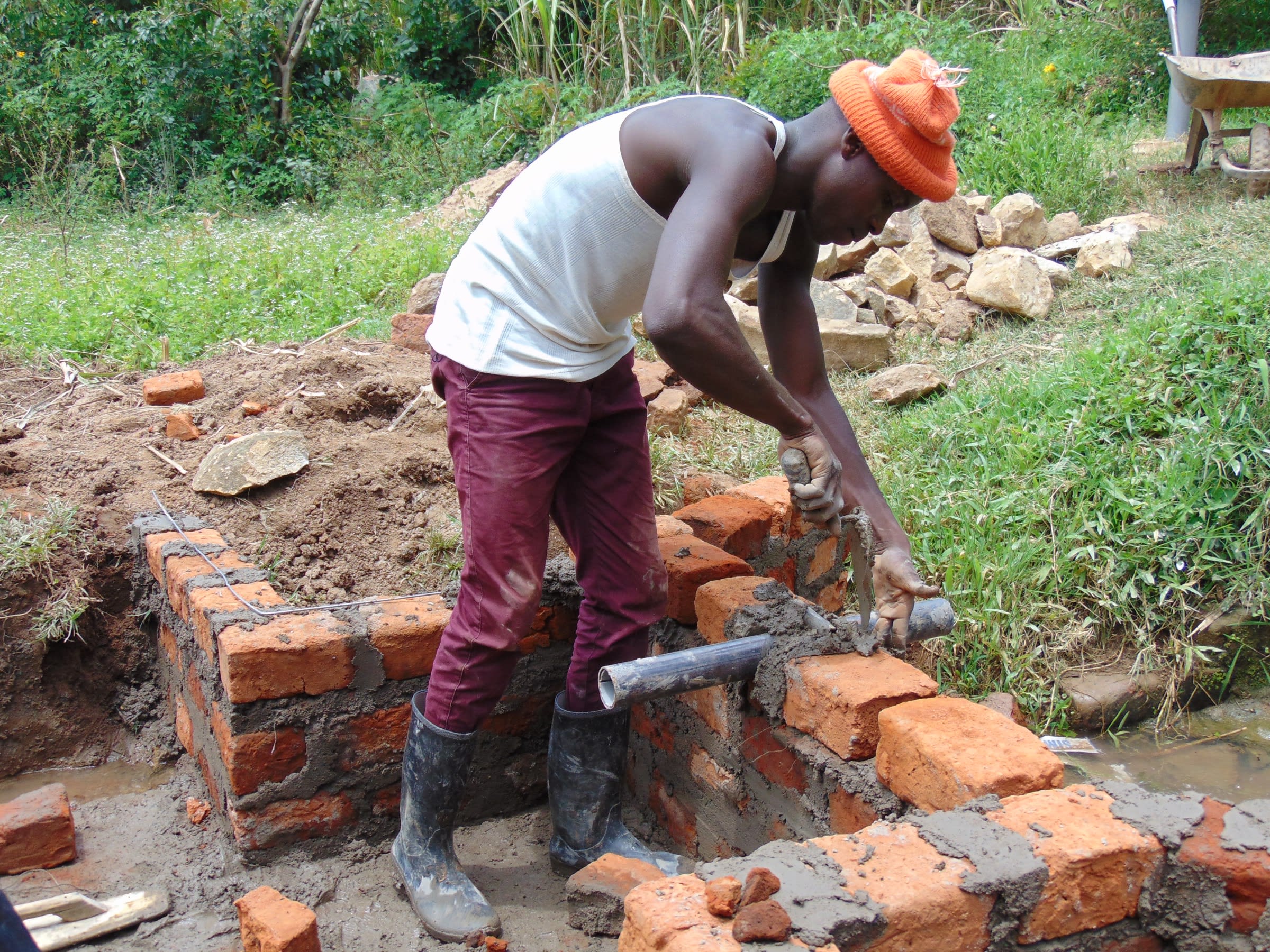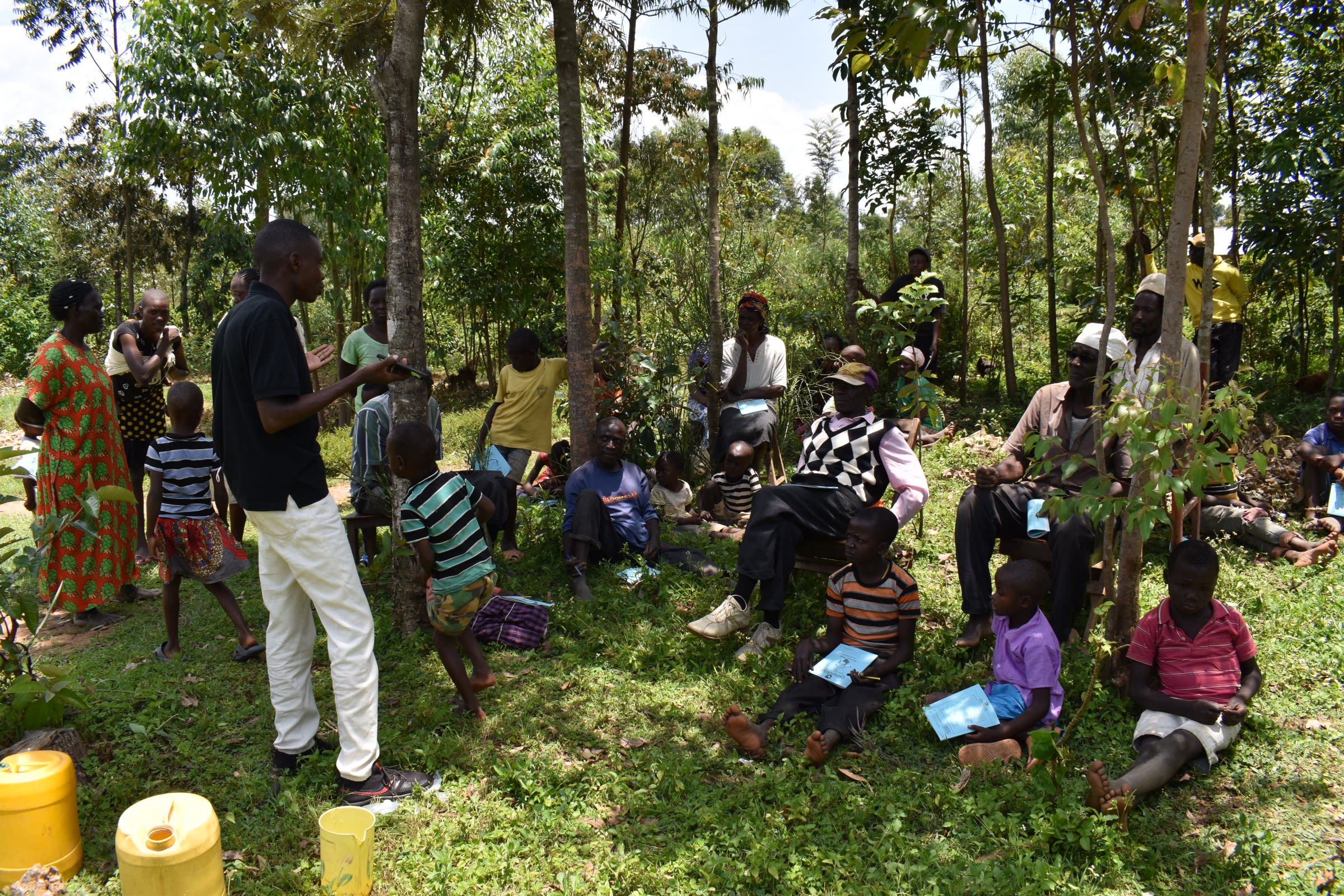"I waste a lot of time collecting water during the dry season due to overcrowding. Since the spring is unprotected, animals can access the spring, which makes it contaminated because sometimes we find fecal matter very close to the spring. My family and I suffer from diarrhea from time to time, and medication is expensive for me," said Lois Philis Aromba, a 49-year-old farmer in Lunyinya, referring to her water source, Ngaiywa Spring.
Lois is one of 320 people in Lunyinya who depend on Ngaiywa Spring as their primary water source, but the spring cannot produce clean water in its current state. As it stands, Ngaiywa Spring provides a shadow to a past attempt at spring protection some time ago. But that attempt was not made to standard, and it quickly fell apart, leaving community members with a difficult-to-access spring and dirty water once again.
Today, the discharge pipe sits in a gaping hole surrounded by mud, clay, and green growths. Without separation between the outside environment and both ends of the pipe, the water is exposed to animal waste, soil erosion, and farm chemicals carried by runoff from the rains. As a result of depending on dirty water for daily use, community members report constant coughs, colds, and diarrhea.
When people fall ill due to consuming the spring water, families lose precious resources trying to pay for medicine and hospital visits. Time spent at home sick means time lost at work among adults and in school for children.
Access is the other major challenge at Ngaiywa Spring. Since the past construction work broke down, eroded bricks stick out at random. Without a proper drainage system, the ground beneath the pipe fills with water and silt several inches deep.
"The water point looks pathetic, and I step in dirty water to fetch water. Accessibility is difficult, especially when it is overcrowded during the dry season because people from different areas come to collect water at this point," said primary school-aged student Purity.
Ngaiywa Spring is known for its reliable water even when other springs in the area go seasonally dry, hence the crowds both Lois and Purity mention. But without a correctly placed discharge pipe and backfilled system behind it, the current pipe is missing a lot of the water the spring produces. The limited output slows community members down as they wait for their jerrycans to fill, eating away at the time they have for the rest of their daily activities.
What We Can Do:
Spring Protection
Protecting the spring will help provide access to cleaner and safer water and reduce the time people have to spend to fetch it. Construction will keep surface runoff and other contaminants out of the water. With the community’s high involvement in the process, there should be a good sense of responsibility and ownership for the new clean water source.
Fetching water is a task predominantly carried out by women and young girls. Therefore, protecting the spring and offering training and support will help empower the female members of the community by freeing up more of their time and energy to engage and invest in income-generating activities and their education.
Training on Health, Hygiene, COVID-19, and More
To hold training during the pandemic, we work closely with both community leaders and the local government to approve small groups to attend training. We ask community leaders to invite a select yet a representative group of people to attend training, which will then act as ambassadors to the rest of the community to share what they learn. We also communicate our expectations of physical distancing and wearing masks for all who choose to attend.
The training will focus on improved hygiene, health, and sanitation habits in this community. We will also have a dedicated session on COVID-19 symptoms, transmission routes, and prevention best practices.
With the community’s input, we will identify key leverage points to alter their practices at the personal, household, and community levels to affect change. This training will help ensure participants have the knowledge they need about healthy practices and their importance to make the most of their water points as soon as the water is flowing.
Our team of facilitators will use a variety of methods to train community members. Some of these methods include participatory hygiene and sanitation transformation, asset-based community development, group discussions, handouts, and demonstrations at the spring.
One of the most important issues we plan to cover is handling, storing, and treating water. Having a clean water source will be extremely helpful, but it is useless if water gets contaminated by the time it is consumed. The community and we strongly believe that all of these components will work together to improve living standards here, which will help to unlock the potential for these community members to live better, healthier lives.
We will then conduct a small series of follow-up training before transitioning to our regularly scheduled support visits throughout the year.
Training will result in the formation of a water user committee, elected by their peers, that will oversee the spring's operations and maintenance. The committee will enforce proper behavior around the spring and delegate tasks that will help preserve the site, such as building a fence and digging proper drainage channels. The fence will keep out destructive animals and unwanted waste, and the drainage will keep the area’s mosquito population at a minimum.

 Protected Spring
Protected Spring
 Rehabilitation Project
Rehabilitation Project








